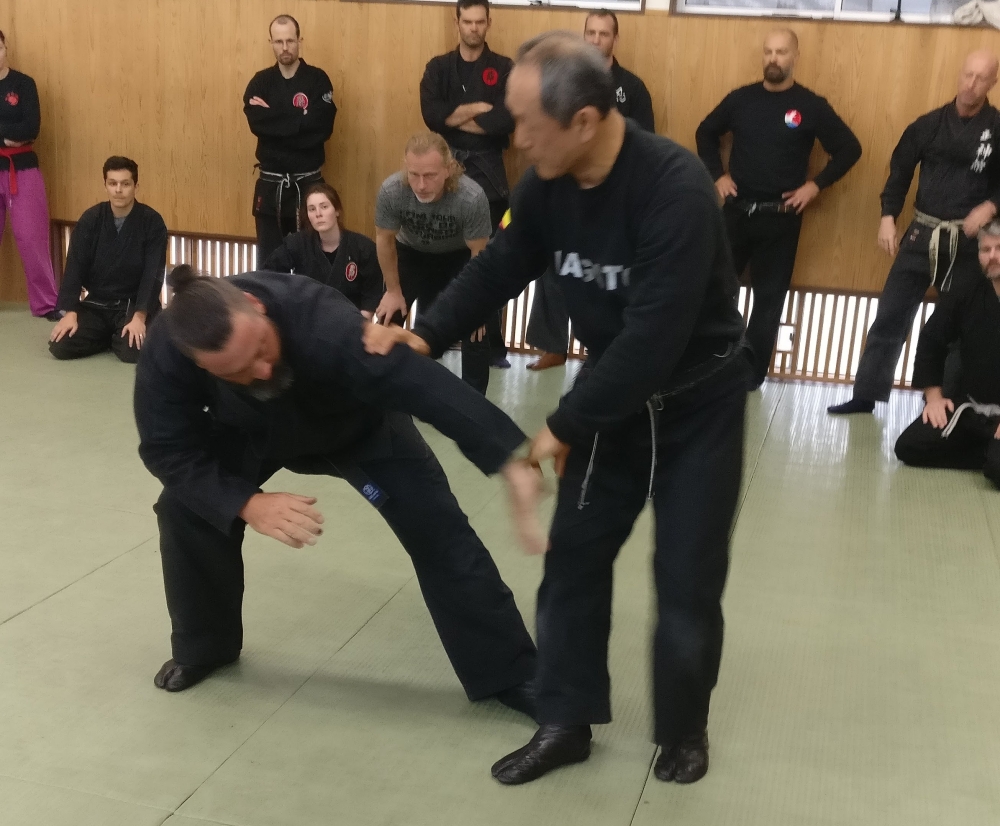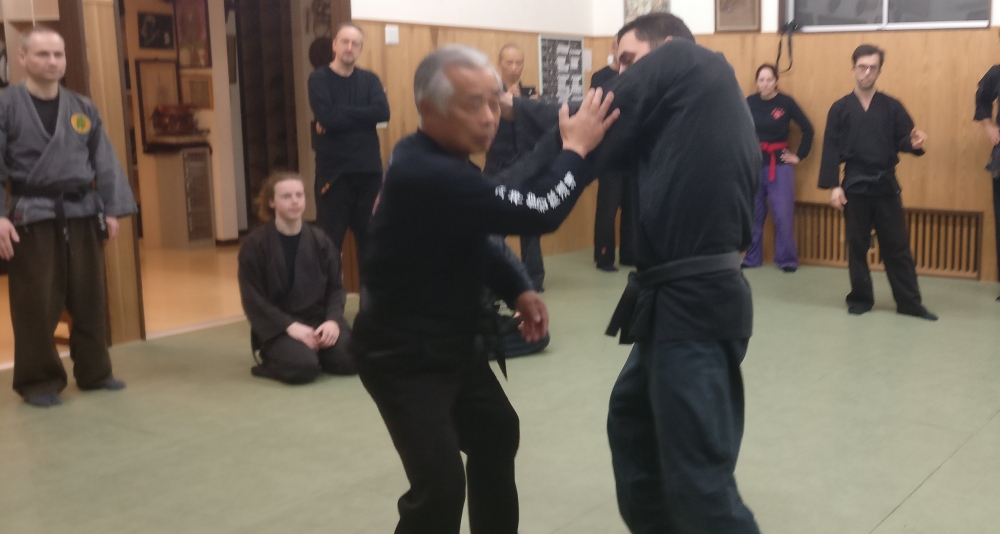Protect Your Holes!
From Shiro Kuma by kumablog
 What I like when training with Nagato sensei, is that he often has his way to convey his ideas. Today was no different when he said “protect your holes!” and laughed.
What I like when training with Nagato sensei, is that he often has his way to convey his ideas. Today was no different when he said “protect your holes!” and laughed.
What he meant was about the fight. When you are fighting the opponent, make sure not to let any Suki, holes, in your movements. (1)
When you move closer to him, Uke tries to resist and to hit you. So, when you get close to him, check all the openings in your body and close them before doing any movement. And this is the same with or without the Yoroi. That is an essential point in Taijutsu. Protection and balance are the first things to do.
Too often I see practitioners not protecting their openings enough. Luckily for them, their attacker is friendly (they will be Tori soon), so the outcome is always positive. But this would be different in a real encounter.
In sword, we have a Kamae called “Tōtoku Hyōshi no Kamae.” (2)
In Taijutsu, “Toku” (shield) is like awareness (3), it is a permanent aspect of the fight. If you leave your body unprotected, Uke will take advantage of it.
In Nagato sensei’s movements, the action of his hands is always a consequence of his footwork. Only when your body is in a good position that you can apply the technique. By “having the body in a good position,” I mean that all your Suki are out of reach or closed.
When we watch a movement, we memorize the hand’s actions more or less. We don’t pay enough attention to the other aspects of the technique. That is a whole including footwork, body angle, relative angle, distance, and rhythm. These aspects are all linked together and play a significant role in the exchange between Uke and Tori. In a real fight, Uke and Tori will react to one another in attack or defence; this is why the footwork is vital.
Knowing how to apply the lock is a good start. But understanding how to place yourself well is better. So that Uke is never in a position to counter-attack. That is more important.
Today, Nagato sensei stressed this many times during the class. We did many variations around Musha Dori and Ō Soto Gake. We did them with grabs, reverse kicks, Tsuki, Taiken, Nage and Ashi Rau. Each time he insisted that we closed our weakness points.
As Hatsumi Sensei says, Mutō Dori is about controlling. But it is not enough to control the attacker or the Kūkan between and around us. No, the most important is to control ourselves.
If you control yourself, you control the universe. So, protect your holes!
______________
1. 隙, Suki: chink (in one’s armour, armour); chance; opportunity; a weak spot
2. 刀匿表紙, Tōtoku Hyōshi: sword + shield + cover or to “shield yourself under-covered by the sword.”
3. Ishiki, Awareness: see one of the last entries in this blog


 These days, this is precisely the feeling I have when training at the Honbu. When skydiving in free fall, you have this incredible feeling of falling within your fall. It is like being into a vortex. The fall seems infinite like falling into an endless fractal. If you had the chance to experience it, you know what I mean. Speed keeps increasing. And you feel you are falling inside your fall until you reach terminal velocity.
These days, this is precisely the feeling I have when training at the Honbu. When skydiving in free fall, you have this incredible feeling of falling within your fall. It is like being into a vortex. The fall seems infinite like falling into an endless fractal. If you had the chance to experience it, you know what I mean. Speed keeps increasing. And you feel you are falling inside your fall until you reach terminal velocity.



